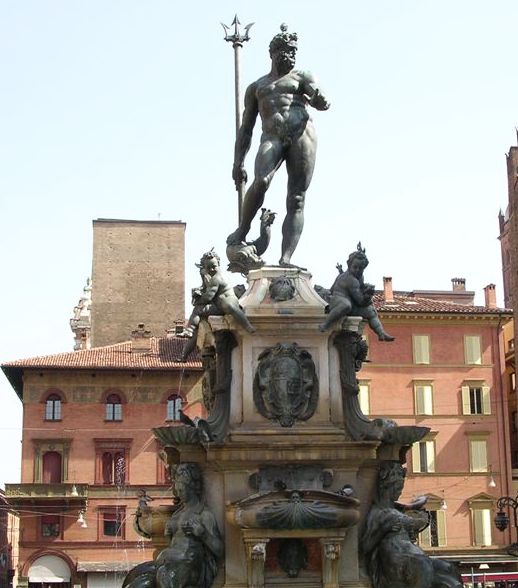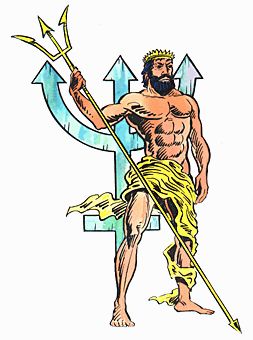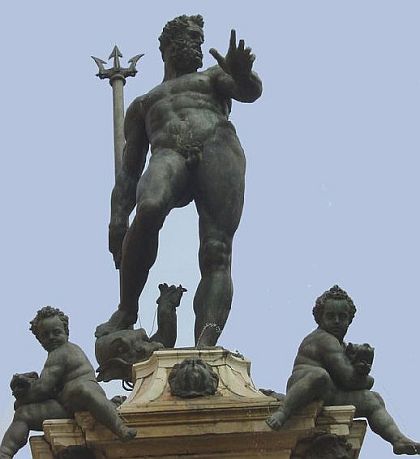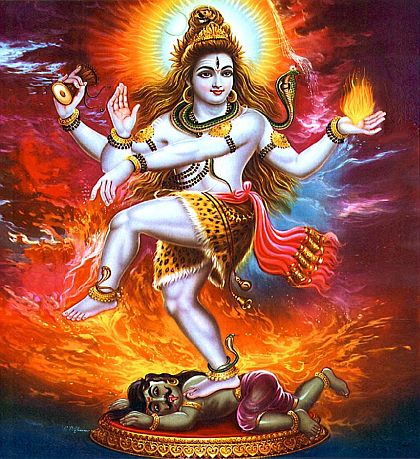Neptune (Latin: Neptūnus) is the god of freshwater and the sea in Roman religion. He is the counterpart of the Greek god Poseidon.
His statue is found in Bologna, Italy on a public fountain.

Notice the trident on this statue of Neptune, typical of Lord Siva as depicted in Vedas and Puranas.
Neptune greek god Poseidon here is also seen here standing on an entity in which case Siva is also seen at times standing on the being of ignorance, illusion, or maaya, showing that he is not affected by its power.
 Siva’s foot that presses down symbolizes tirobhava, or the veiling effect; and the uplifted foot means blessings (anugraha), especially toward seeing through the veil of illusion caused by ego, which is personified by the entity under Siva’s foot.
Siva’s foot that presses down symbolizes tirobhava, or the veiling effect; and the uplifted foot means blessings (anugraha), especially toward seeing through the veil of illusion caused by ego, which is personified by the entity under Siva’s foot.
Nataraj (Siva in dancing pose) is shown with four hands represent the cardinal directions.
He is dancing, with his left foot elegantly raised and the right foot on a prostrate figure — ‘Apasmara Purusha‘, the personification of illusion and ignorance over whom Siva triumphs.
Dance of Siva also represents his five activities: ‘Srishti‘ (creation, evolution); ‘Sthiti‘ (preservation, support); ‘Samhara‘ (destruction, evolution); ‘Tirobhava‘ (illusion); and ‘Anugraha‘ (release, emancipation, grace).
 |  |
This proves how the impressions of Vedic culture and its gods came from India, though styles and names may have changed as it traveled towards west.
Images resembling Ganesh, Siva, Rama and Krishna have been found in many archeological excavations throughout Italy, although not publicized by Christians.
